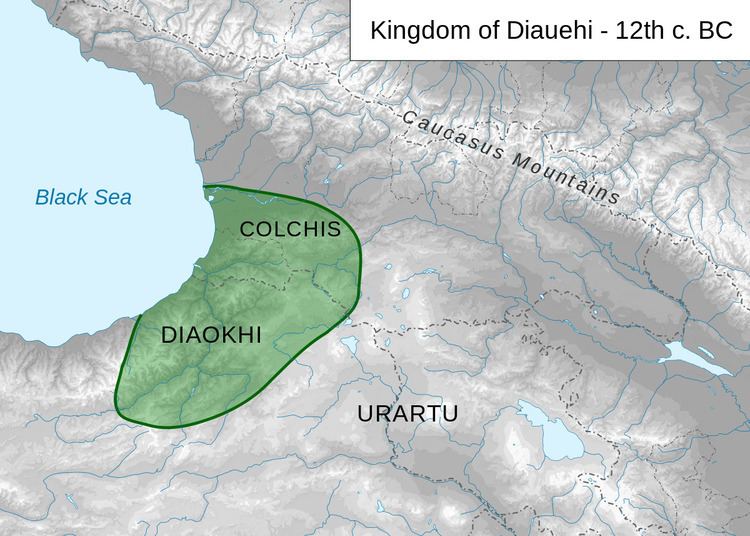Established 12th century BC Preceded by Succeeded by | Disestablished 8th century BC Political structure Monarchy | |
 | ||
Capital Zua (12th - 9th century BC)Ultu (9th - 8th century BC) Today part of Countries today Georgia Turkey | ||
Diauehi or Diaokhi, Daiaeni (Georgian: დიაოხი) was a coalition of tribes, or kingdoms, located in northeastern Anatolia, that was formed in the 12th century BC in the post-Hittite period. It is mentioned in the Urartian inscriptions. It is usually (though not always) identified with Daiaeni of the Yonjalu inscription of the Assyria king Tiglath-Pileser I’s third year (1118 BC). Diauehi is a possible locus of proto-Kartvelian; it has been described as an "important tribal formation of possible proto-Georgians" by Ronald Grigor Suny (1994).
Although the exact geographic extent of Diauehi is still unclear, many scholars place it in the Pasinler Plain in today’s northeastern Turkey, while others locate it in the Turkish–Georgian marchlands as it follows the Kura River. Most probably, the core of the Diauehi lands may have extended from the headwaters of the Euphrates into the river valleys of Çoruh to Oltu. The Urartian sources speak of Diauehi’s three key cities – Zua, Utu and Sasilu; Zua is frequently identified with Zivin Kale and Ultu is probably modern Oltu, while Sasilu is sometimes linked to the early medieval Georgian toponym Sasire, near Tortomi (present-day Tortum, Turkey).
This federation was powerful enough to counter the Assyrian forays, although in 1112 BC its king, Sien, was defeated by Tiglath-Pileser I. He was captured and later released on terms of vassalage. In 845 BC, Shalmaneser III finally subdued Diauehi and downgraded its king, Asia, to a client ruler.
King Asia of Diauehi (850–825 BC) was forced to submit to the Assyrian king Shalmaneser III in 845 BC, after the latter had overrun Urartu and made a foray into Diauehi. In the early 8th century, Diauehi became the target of the newly emerged regional power of Urartu. Both Menua (810–785 BC) and Argishti I (785–763 BC) campaigned against the Diauehi king, Utupurshi (c. 810–770 BC), annexing his southernmost possessions and forcing him to pay tribute, which included copper, silver and gold.
Diauehi was finally destroyed by Colchian incursions by about the 760s BC, the date of the last recorded references to Diauehi.
